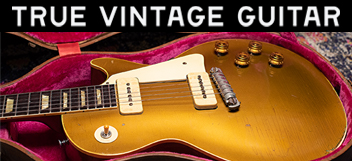Cream Fan
Active member
- Joined
- May 1, 2003
- Messages
- 2,695
I know this has been discussed ad nauseum, but after taking a look at Mike's three bursts in the other thread, I began to wonder if perhaps it's not the tailpiece position that's wrong on an Historic, but the positioning of the pot shafts and hence the knobs? Anyone who owns both Historics and real Bursts ever make comparitive measurments on this? Thanks in advance.



